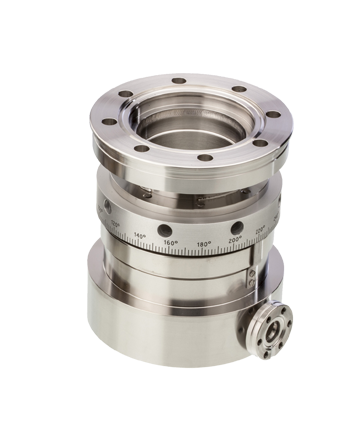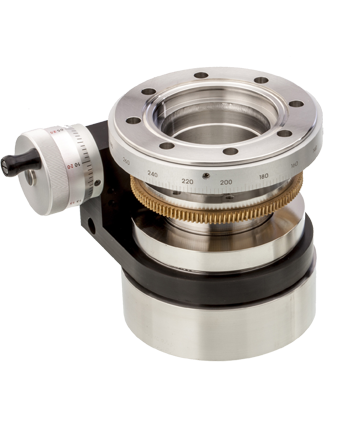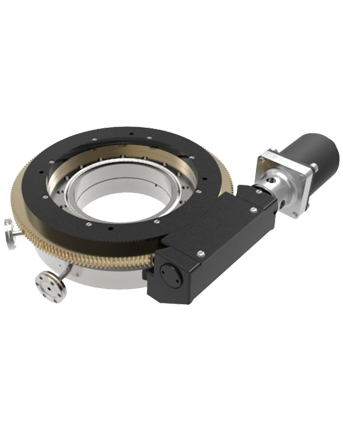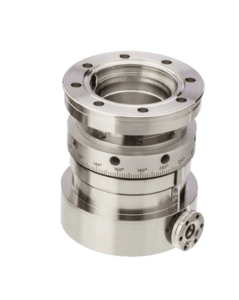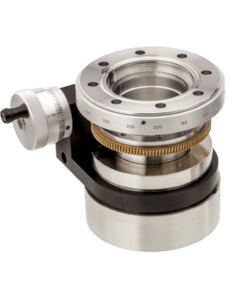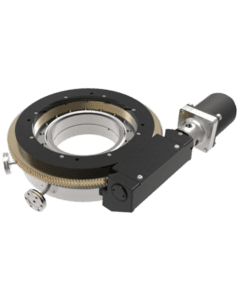Differentially Pumped Rotary Feedthroughs
Rotary platforms provide a means of translation into the vacuum vessel without compromising on vacuum integrity. Differentially pumped rotary feedthroughs (DPRF) are of annular construction to enable a probe or similar device to be inserted into a UHV environment and rotated. The RP100 with 100mm clear bore is designed primarily for use in Cryostat applications, as the large bore size can be fitted to the Omniax Widebore.
The Range
DPRF25
25mm Single Stage DPRF
Key Features
- 70mm OD CF Flange
- Motorisation Options
- 3 RPM Max Rotation Speed
- 2° Manual Resolution
- 0.01° Motorised Resolution
DPRF552
55mm Dual Stage DPRF
Key Features
- 114mm OD CF Flange
- Motorisation Options
- 2 RPM Max Rotation Speed
- 2° Manual Resolution
- 0.0075° Motorised Resolution
Rotary Platform Applications:
Some real life applications for differentially pumped rotary feedthroughs (DPRF) and rotary platforms:
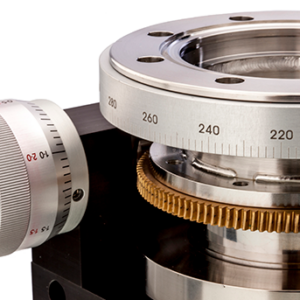
Maintaining Ultra-High Vacuum Conditions:
Differentially pumped rotary feedthroughs allow the introduction of components, samples, or instruments into the vacuum chamber while minimizing the impact on the overall pressure. This helps in preserving the integrity of the UHV environment.
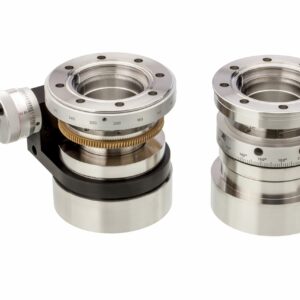
Sample Manipulation & Instrumentation
In UHV experiments, researchers often need to manipulate samples or introduce various instruments for analysis. Differentially pumped rotary feedthroughs provide a sealed interface for rotating and translating components within the vacuum chamber without compromising the overall vacuum conditions.
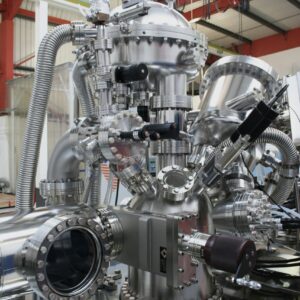
Minimising Transmission of Vibration & Heat:
Differentially pumped feedthroughs are designed to minimise the transmission of external vibrations and heat into the vacuum chamber. This is crucial in experiments where precision measurements or sensitive analyses are performed, as external disturbances can affect the reliability of the results.
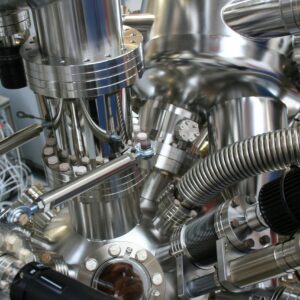
Flexible Experimental Design:
UHV systems are often used in a wide range of scientific applications, from surface science to materials research. Differentially pumped rotary feedthroughs offer flexibility in experimental design by allowing the incorporation of various components and devices while maintaining the required vacuum conditions.

